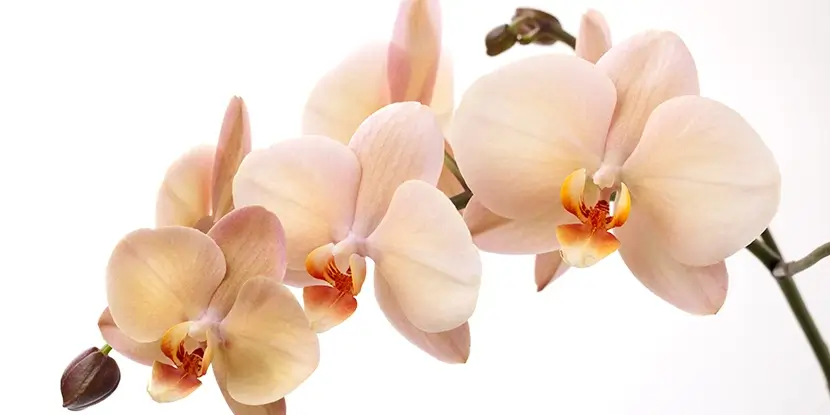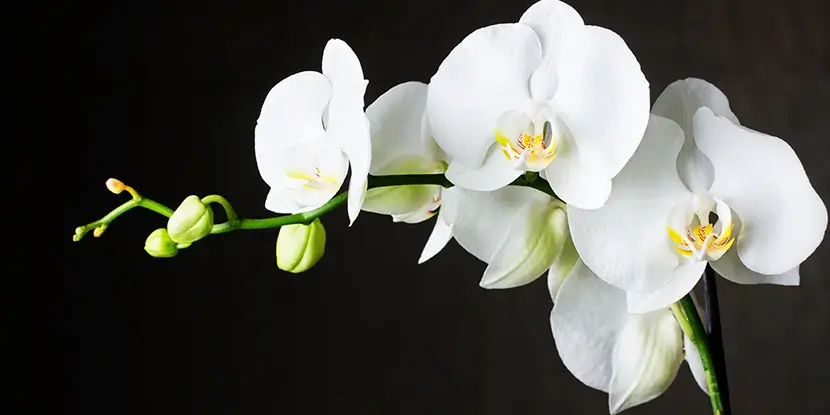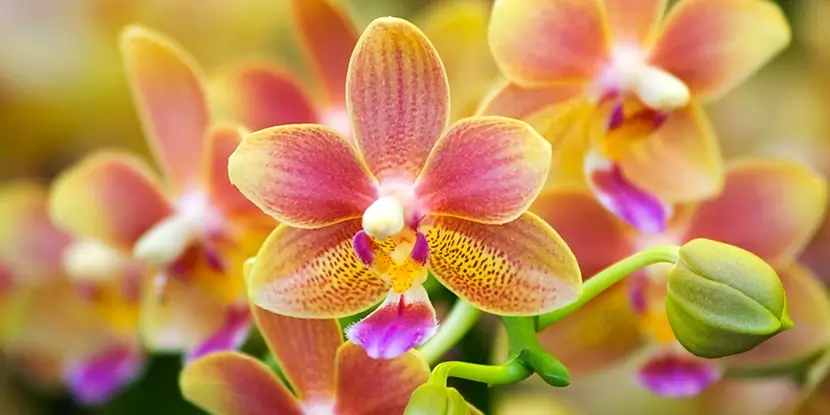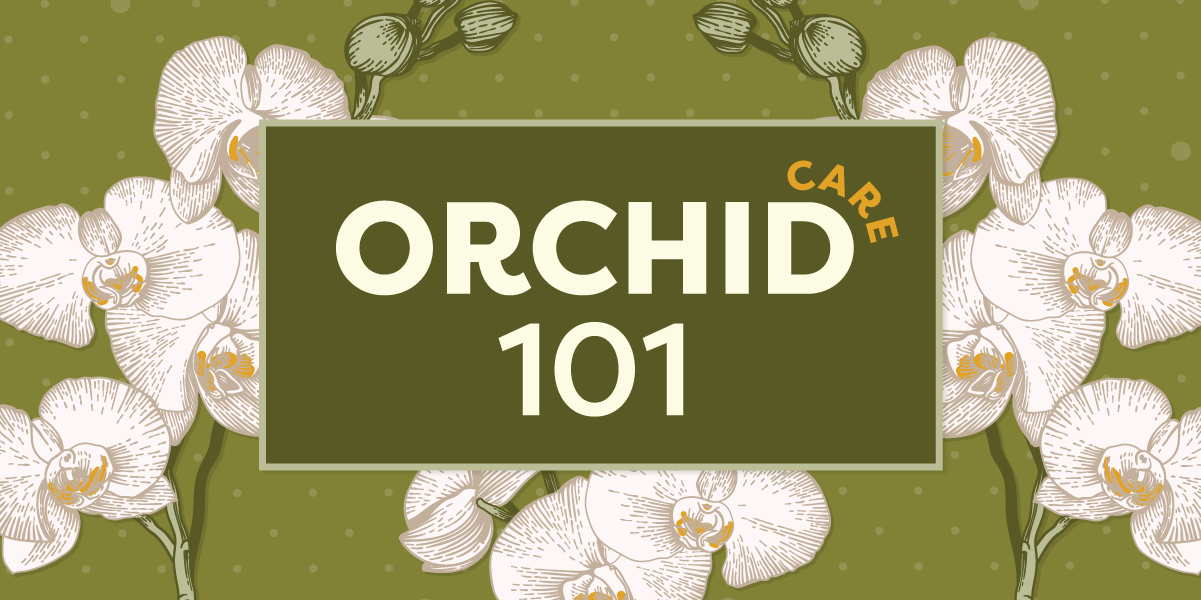Whether grown indoors or out, all orchids require roughly the same care (but don’t care for them roughly!).
Of the many species and hybrids, the most familiar orchid types are cattleya, cymbidium, and paphiopedilum, the corsage flowers.
This blog will outline the care needed to keep your orchids blooming year after year.
Origins of the Orchid
Orchids are one of the oldest and most diverse plant families on Earth. They likely originated over 100 million years ago, during the time of the dinosaurs. Fossil evidence suggests that orchids first appeared in what is now Asia, and quickly spread as they adapted to different environments.
- Tropical Asia and the Himalayas are major centers of orchid diversity.
- South America, especially the Andes region, is another hotspot where many orchid species evolved.
- Fossils in Dominican amber show that orchids were already present in the New World by 15–20 million years ago.
Today, orchids grow on every continent except Antarctica, flourishing in everything from rainforests to grasslands and alpine regions.
Temperature & Humidity
Most dwarf orchid varieties thrive indoors, since they require less humidity.
- Thirty to fifty percent humidity is enough for most orchids.
- Place your potted orchid on a pan or clay saucer filled with gravel to humidify. Small-sized gravel is best.
- Add just enough water to keep the gravel moist. Don’t let the bottom of the pot sit in water.
- Ideal temperatures are close to those of the average home — 60 to 65 degrees at night and 65 to 80 degrees during the day.

A flower spike of cream-colored orchid blooms.
Light
- Orchids do best in bright but indirect light. Direct sunlight can burn their leaves.
- Positioning orchids in an east or south-facing window gives them the correct light intensity.
- Orchids need about 12–14 hours of light daily. When there’s less natural light in winter, consider extending light exposure with artificial lighting.
Potting Orchids
Clay pots, wire baskets, or small redwood tubs work well for home growing.
- Orchids growing in 5, 6, 7, or 8-inch pots need repotting every eighteen months.
- Orchids in larger containers have to be repotted every three years.
- Be sure your pot or container has a large drain hole.
- Fill the bottom one-third of the pot with well-washed broken or chipped pottery.
- Medium-sized fir bark is fast becoming the most popular orchid planting material. Do not use soil.
- Osmunda (tree fern fiber) contains more nutrients than fir bark but is more difficult to use. Soak it in water for several hours for easier handling during repotting.
- When you pull an orchid from an old pot, remove as much of the old potting mixture as possible, being careful not to damage the orchid’s root system.
- Cut off all dead or partially dead roots (they will be black or brown) to live tissue, which is white.
- Position the plant in the new pot and slowly work the fresh bark in and around the root system until all roots are covered.
- Water well.
Watering Orchids
- There’s no single rule for watering orchids. Orchids require water more often in the summer than in winter.
- Small pots dry out faster than larger ones.
- Do not water when in doubt. The plant is fine as long as the potting bark seems moist or damp.
- Watering once every ten days is enough for most orchids.
- Water slowly and thoroughly until water comes out of the drain well. Keep surplus water away from the pot.
- Water early in the day and not at night; wet leaves overnight can cause some varieties to rot or develop black spots.

A inflorescence of white orchid blossoms.
Misting Your Orchid Plant
Mist your orchids daily, if possible.
- Mist your orchids in the morning. This allows the water to evaporate during the day, preventing fungal infections and rot.
- Use distilled or rainwater for misting. Tap water contains minerals and chemicals that might harm your orchid.
- Choose a spray bottle that produces a fine mist. Avoid drenching the leaves.
- Hold the bottle about 8-12 inches away from the orchid.
- Spray the orchid’s leaves, aerial roots, and the growing medium’s surface. Avoid misting the flowers directly.
- Ensure that water doesn’t pool on the leaves or in the plant’s crown.
Fertilizing Orchids
- Use a balanced fertilizer, such as a 20-20-20 formulation, diluted to quarter strength.
- Fertilize orchids every two weeks during their growth phase, typically from spring to early autumn.
- Reduce fertilizing frequency to once a month during the dormant phase, usually in winter.
- Water the orchids before applying fertilizer to prevent root burn.
- Apply the diluted fertilizer solution to the potting medium and roots, avoiding the leaves and flowers.
- Every fourth feeding, leach the pot with plain water to wash away accumulated salts.
Controlling Insects & Fungus
- Regularly inspect your orchids for signs of pests and fungal infections. Common pests include aphids, mealybugs, and spider mites, while fungal pathogens often manifest as black or brown spots on leaves.
- Apply neem oil, a natural insecticide and fungicide, to the affected areas. Dilute according to the manufacturer’s instructions and spray thoroughly, covering leaves, stems, and the base of the plant.
- To control pests, use a mild insecticidal soap spray. Ensure thorough coverage of the plant, focusing on the undersides of leaves where pests often hide.
- Wipe off scale insects with a damp cloth.
- For fungus and mildew, spray with Bordeaux mixture (copper sulfate and lime)
- Ensure good air circulation around your plants to reduce humidity and prevent fungal growth. Use fans if necessary, especially in indoor settings.

Variegated orchids on a flower spike.
FAQs: Growing Orchids
Q: How often should I water my orchids?
Water your orchids every 5 to 12 days, depending on the climate and the potting medium. Allow the potting mix to dry slightly between waterings.
Q: What’s the right way to water orchids?
Water orchids thoroughly, allowing water to drain out of the bottom of the pot. Avoid letting the plant sit in standing water, and ensure the roots aren’t constantly wet.
Q: What’s the best location for my orchids?
Orchids thrive in bright, indirect sunlight. A spot near a window with sheer curtains or an east-facing window is ideal.
Q: How do I know if my orchid’s getting enough light?
If an orchid’s leaves are deep green, it might be underexposed. Orchid leaves should be a lighter, grassy green, which indicates adequate light exposure.
Q: When is the right time to repot orchids?
Repot orchids every 2 to 3 years or when the potting medium starts to decompose. Repotting is best done in the spring after the plant has bloomed.
Q: What type of potting mix should I use for orchids?
Use a specific orchid potting mix of bark chips, sphagnum moss, and perlite. This ensures adequate drainage and airflow to the roots.
Q: How can I make my orchid rebloom?
Ensuring proper care — sufficient light, regular watering, and occasional fertilizing — will help your orchid rebloom. Also, a slight reduction in temperature at night can stimulate blooming.
Q: How often should I fertilize my orchids?
Fertilize your orchids lightly every 2-4 weeks during the growing season with a balanced, water-soluble fertilizer, reducing frequency in the winter.
Q: Why are my orchid’s leaves turning yellow?
Yellow leaves can indicate several issues, including overwatering, under-watering, or too much direct sunlight. Assess the conditions and adjust accordingly.

